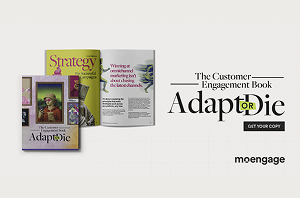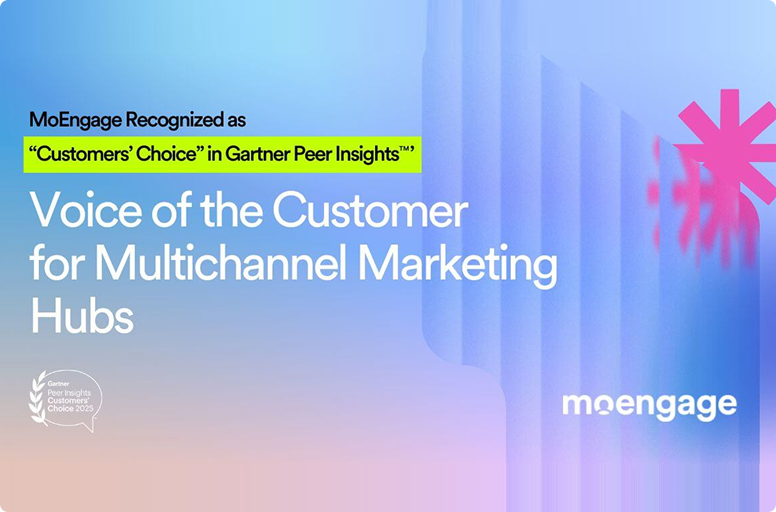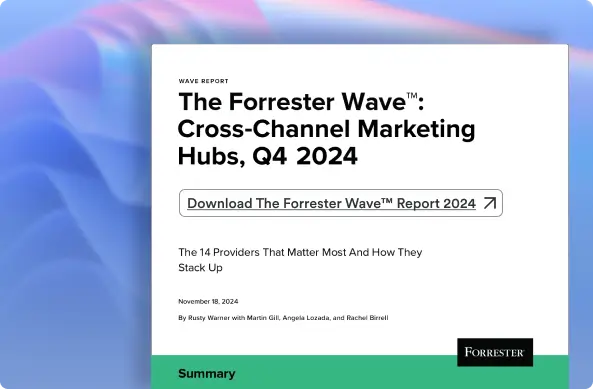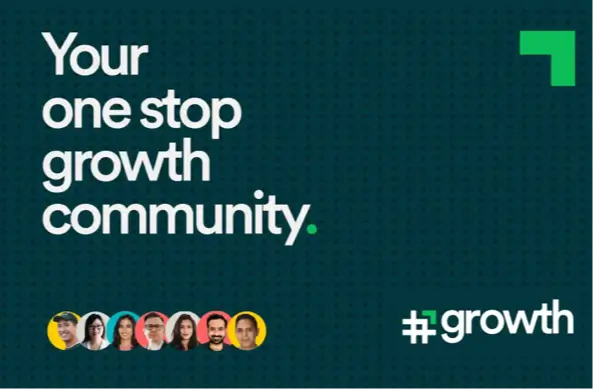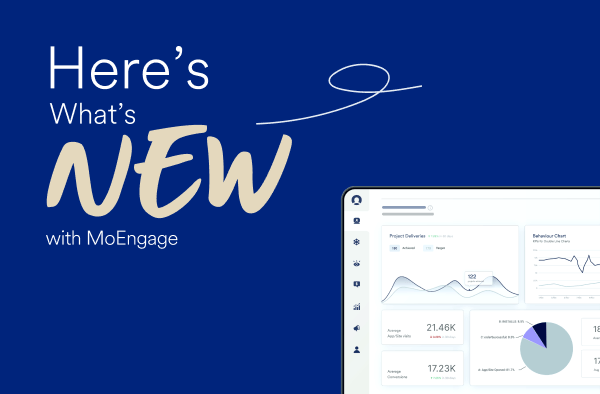Customer Engagement Trends Enterprises Cannot Ignore In 2025
Most enterprises and traditional brands will undergo digital transformation in 2025. Here are the latest Customer Engagement trends to help you with this journey.

Reading Time: 9 minutes
2025 will be a critical year for large enterprises and traditional brands as they prepare to embark on their digital transformation journeys. Digital transformation isn’t merely an option – it’s a strategic imperative that changes how enterprises engage with customers, operate, and grow.
Digital transformation is the first step to profitability. Thanks to digital transformation, enterprises can drive business growth by unlocking new revenue streams, amplifying customer experiences, and optimizing business processes.
In 2025, we will witness increased digital adoption and migration to modern, agile, scalable, and reliable technologies. With large enterprises prioritizing digital transformation and modernizing their tech stack, here are some Customer Engagement trends that will help you along the way.
Trend #1: Deriving Meaningful Insights From Data Will Help You Truly Understand Your Customers
Understanding customer behavior and preferences is paramount for enterprises. Thanks to advanced customer analytics, you can learn what actions your customers take, how they browse between screens, what they like, what triggers them to purchase, how often they need your services or buy your products, and more. You can then use this information to tailor offerings, predict behavior, prevent churn, and improve your product.
Customer insights also serve as a valuable feedback loop for enterprises by providing actionable data to improve your products, services, and the overall customer experience. For example, understanding why a customer drops off from your website without making a purchase helps you reduce points of friction in the overall customer journey.
While the interest trends for Analytics might imply a slowdown a bit toward the end of 2025, the interest in Analytics is predicted to grow and continue to grow in 2025:

Since consumer brands already collect vast amounts of data, you need the right platform to extract meaningful insights from this data. In 2025, you must gather the following types of insights:
1. Customer insights
Make your customers realize that you “get” them by understanding them well before you roll out your engagement campaigns. Get answers to questions like:
- What channel does my customer prefer?
- What category of product/content does my customer love?
- Which set of customers is most likely to go dormant or churn?
- Which segment of customers is price-sensitive and loves discounts?
- What time of the day is the best to send our marketing communication?
- Which set of customers is loyal and more likely to be my brand advocates?
2. Customer journey insights
Control customer experience and tweak it for maximum engagement by answering questions like:
- Where in your customer journey are you losing most of your customers?
- How are customers navigating on your website or inside your mobile app?
- Which customer cohorts are not converting, and what actions are leading to this?
- What steps in your journey are leading to the highest customer churn?
3. Campaign insights
Measure the long-term impact of your campaigns on key business metrics by learning how your customers respond to your campaigns and communication:
- What is the long-term impact of customers engaging with your campaigns?
- Which customer segments are engaging well, and which aren’t for a specific campaign?
- How do your A/B tests uplift revenue, engagement, and retention?
- Are you sending too many notifications to your customers? If yes, which set of customers are these?
| 💡 Uncovering patterns, preferences, and behaviors to make strategic, data-driven decisions is a priority action item for enterprise brands in 2025. |
Trend #2: Personalizing Experiences Will Make Your Brand More Customer-Centric
Generic interactions and broadcast messages are so 2010. More than a decade later, personalization has evolved beyond “first name.”
Personalization is crucial for enterprises as it allows you to connect with customers on a deeper level and enhance their overall experience. Tailoring products, recommendations, and marketing communications to individual preferences and behaviors will make every customer interaction more engaging and relevant.
A personalized approach in your engagement strategy will foster stronger customer relationships, increasing customer satisfaction and loyalty.
Additionally, personalization drives business growth and profitability. By delivering targeted messages and recommendations based on customer data and behavior, enterprises can significantly improve the ROI of their marketing campaigns.
Interest in personalization peaked globally toward the end of 2023. As enterprises continue to invest more in personalization, interest is predicted to continue growing in 2025.

Building personalized website experiences is a top priority for enterprises in 2025
Your brand website plays an essential role in the buyer journey. Whether it is product discovery, acquisition, engagement, or repurchases – consumers expect a tailored and personalized experience at every step.
A personalized website experience can reduce acquisition costs by up to 50% and boost revenue by up to 15%.
With brands increasing their focus on website personalization in 2025, you may think this comes with an increased dependency on your engineering teams. But that isn’t true. Thanks to modern DIY platforms, you can build personalized website experiences at scale using drag-and-drop WYSIWYG editors and templates.
| 💡 From product recommendations to content personalization, understanding and catering to each customer’s unique needs will be the primary area of focus for enterprise brands in 2025. |
Trend #3: Artificial Intelligence Will Assist You With Optimization At Scale And Rapid Growth
Collins Dictionary named “AI” as the Collins Word of the Year 2023, thanks to an explosive growth in the adoption of Generative AI due to the introduction of several advanced Natural Language Processing (NLP) models and Large Language Models (LLMs).
Artificial Intelligence is crucial for enterprises as it offers a multitude of benefits across various business functions – ranging from improving operational efficiency to enhancing customer experiences. By leveraging AI technologies such as machine learning, natural language processing, and predictive analytics, enterprises can automate tasks, streamline processes, and make data-driven decisions at scale.
AI is pivotal in driving competitive advantage for enterprises by enabling them to optimize and enhance marketing strategies. It empowers you to adapt quickly to customer behavior changes, seize new and growing opportunities, and drive more conversions from marketing campaigns.
👉 Here’s an example of how enterprises can use AI to drive up to 2.5X more conversions.
The trend lines for AI show a steady growth in interest in 2023, and the trend is expected to continue in 2025.

Integrating Generative AI in Customer Engagement will continue to be a major trend in 2025, helping enterprise brands revolutionize their interactions with their audience.
Leveraging the power of Generative AI to engage customers more efficiently is a core area of focus for enterprise brands in 2025
The generative capabilities of Artificial Intelligence can be used for:
- Messaging Copies – writing push notifications, SMS, email subject lines, ad copies, in-app messages, and more
- Segmentation – building extensive groups of customers who have performed similar actions, have common attributes, or share the same interests
- Creatives and Illustrations – create attention-grabbing visuals to improve campaign metrics and stand out from your competition
- Conversational Insights – gathering information on how specific campaigns have performed, their impact on your North Star Metrics, what cohorts of customers interacted positively, and more
- Campaign Creation – proactively executing campaigns for customers that are likely to churn, have been inactive for long, or have abandoned their journey before making a purchase
| 💡 Beyond generative capabilities, AI will help enterprise brands automate tasks, predict customer behavior, optimize conversions, A/B test at scale, and so much more in 2025. |
Trend #4: Building Seamless Omnichannel Experiences Will Increase Brand Recall
Whether online, offline, mobile, or social media – customers expect a seamless experience between all touchpoints with your brand.
Enterprises can interact with customers wherever they are in their journey by connecting various touchpoints such as physical stores, websites, mobile apps, emails, SMS, push notifications, and customer service channels. This holistic approach fosters brand consistency and visibility, as customers encounter the same messaging and experience across various channels, reinforcing your brand’s identity and fostering trust.
An omnichannel engagement strategy also allows you to gather valuable data from different channels, enabling you to gain insights into customer behavior and preferences at every touchpoint, which can be used to personalize interactions and drive more targeted marketing efforts.
The interest in Omnichannel Marketing grew consistently in 2023, and the growth is expected to continue in 2025.

Omnichannel marketing strategies aim to create a unified customer experience across various channels. However, brands most often fail to build this experience because they subscribe to multiple-point solutions instead of a single, integrated Customer Engagement platform.
Investing in an integrated Customer Engagement platform will be an important step Enterprises will take in 2025 to digitally transform
The total cost of ownership of multiple solutions can be up to 35% more than that of an integrated platform (source).
Here’s a breakdown of what makes multiple-point solutions more expensive than a single platform:
- Implementation and upgrades cost 30-40% more
- Maintenance and platform training costs are 35-45% more
- Operations are 20-30% more expensive
- The IT infrastructure costs lead to up to 30% extra
- Vendor management builds up to 20-30% more expenses
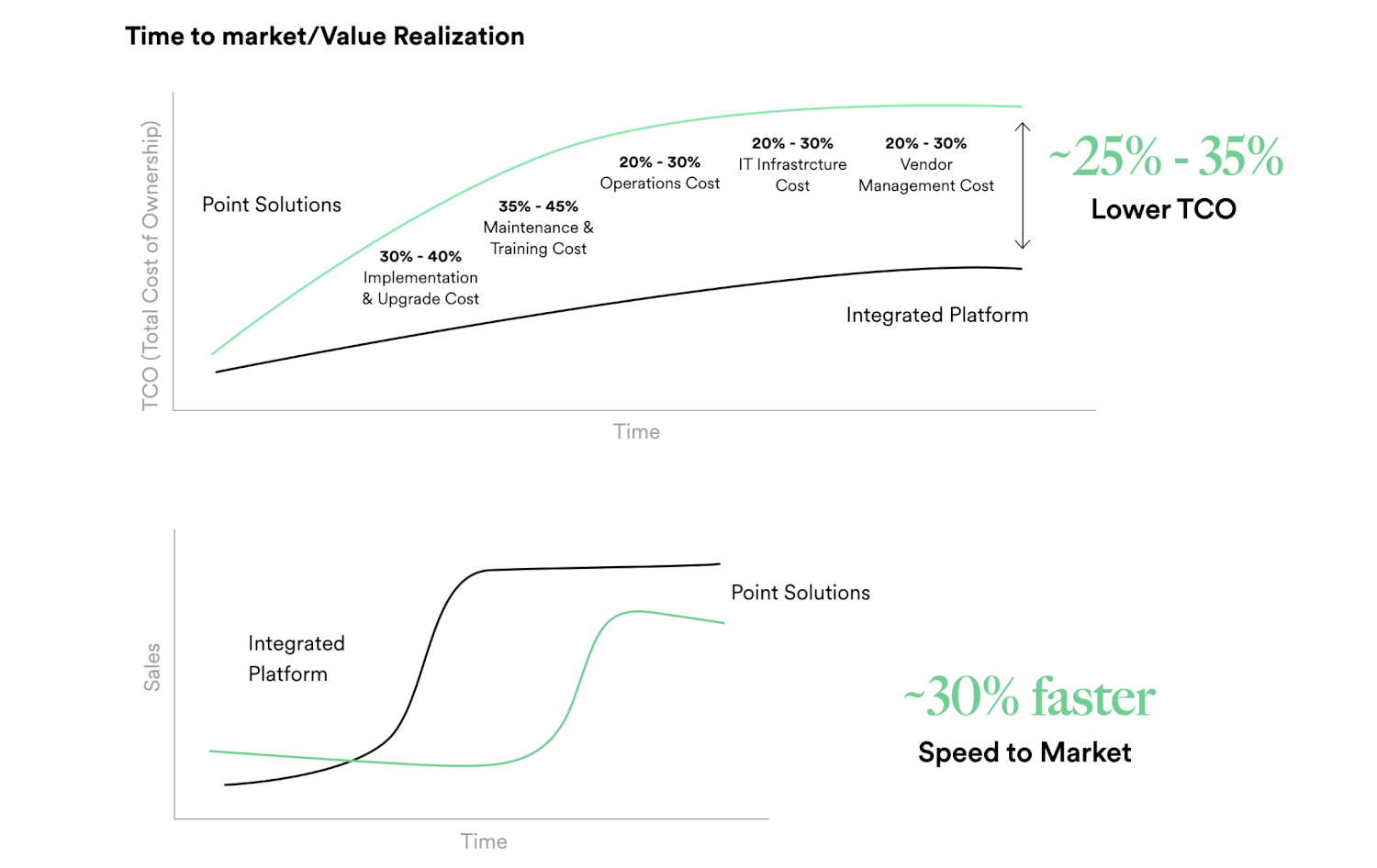
Multiple solutions also come with additional baggage of implementation time. It takes about 30% longer to set up and start using different platforms versus a single Customer Engagement solution. This harms your go-live times, slowing you down by 30% as compared to your competitors.
| 💡 In 2025, a successful Omnichannel engagement strategy that ensures you can offer customers a coherent and integrated journey will be the key to success for Enterprises. |
Trend #5: Navigating Customer Data Ethically Will Earn Your Customer’s Loyalty
Don’t you hate receiving phone calls, emails, or messages from brands you never signed up for?
Your customers trust you with their personal information and expect you to honor their trust by safeguarding their data. This not only includes you setting up an infrastructure that complies with international and local privacy regulations but also partnering up with third-party solutions that follow the same guidelines and compliances.
The graph below shows growth trends for privacy in the past. A steady and continuous increase shows that privacy will continue to remain a strong consumer interest in 2025.

In 2025, Enterprises will need to invest in partners and solutions that comply with the same privacy standards as themselves. Since Customer Engagement is a heavily data-driven process, it is essential that you get the same results without compromising the safety of your customer data. Enterprises must pick a partner that can ensure data ingestion, storage, and management happens securely.
Privacy-first Customer Engagement platforms like MoEngage have built strong features to protect your customer data. Personal Identifiable Information (PII) masking and tokenization are 2 such processes that ensure third-party platforms like MoEngage cannot access the sensitive information of your customers without compromising on the platform’s capabilities to analyze and predict trends, create segments and cohorts, or send personalized recommendations.
| 💡 Building trust through ethical practices is paramount. Brands that respect privacy and security establish a foundation for long-lasting customer relationships. |
6. Transactional Messaging: Elevating Efficiency and Communication
Transactional messaging represents a critical aspect of Customer Engagement. From order confirmations to shipping notifications, these messages play an important role in building trust and long-lasting relationships with your customers.
Here’s a graph showing the interest in transactional messages over time. The upward trend is predicted to continue in 2025.

Optimizing transactional messaging for clarity, timeliness, and relevance is essential. Well-crafted messages not only fulfill transactional requirements but also contribute to building a positive brand image.
Enterprises should consider lowering development costs and overhead by investing in plug-and-play transactional messaging infrastructures. While building an in-house solution is practically possible, ensuring 3-second send rates, 99.999% uptimes, and going live in under a week’s time will give you an edge over your competitors.
It is also essential for an Enterprise to have a single platform that helps them manage promotional and transactional messages. A unified platform gives you a bird’ s-eye view of all the communication a customer is receiving from your brand. This helps with consolidated campaign management and ensures consistent branding via content templates.
A critical alert infrastructure must also be combined with a unified analytics platform to ensure Enterprises can achieve sustainable growth by reducing development efforts by 95% and saving costs by 60%.
| 💡 Delivering critical alerts such as OTPs, password resets, payment failures, and security notifications in real time without investing huge amounts of developing and engineering bandwidth will be an important area of investment for Enterprises in 2025. |
👉 Read more about MoEngage’s Inform and calculate your cost savings here.
Conclusion: Navigating the Future of Customer Engagement
Customer Engagement and Retention will continue to be vital elements in building lasting relationships and fostering brand loyalty.
As Enterprises navigate the dynamic landscape of digital transformation, these six Customer Engagement trends stand out as guiding principles for 2025.
- Uncovering patterns, preferences, and behaviors to make strategic, data-driven decisions.
- Building personalized website and mobile app experiences catering to individuals, not cohorts.
- Leveraging the power of generative AI to optimize your strategy and engage customers more efficiently.
- Investing in a single, integrated Customer Engagement platform versus multiple-point solutions to provide a consistent Omnichannel experience to your customers.
- Building trust through ethical practices by respecting privacy and security without compromising on customer experiences.
- Ensure critical alerts, such as OTPs, password resets, payment failures, and security notifications, are delivered in less than 3 seconds without failure.
Investing in technologies that help you migrate digitally faster will help you create memorable, customer-centric experiences that stand the test of time. We would happily guide you on your digital transformation journey and help you build a reliable martech stack. Schedule a call with our experts today!

